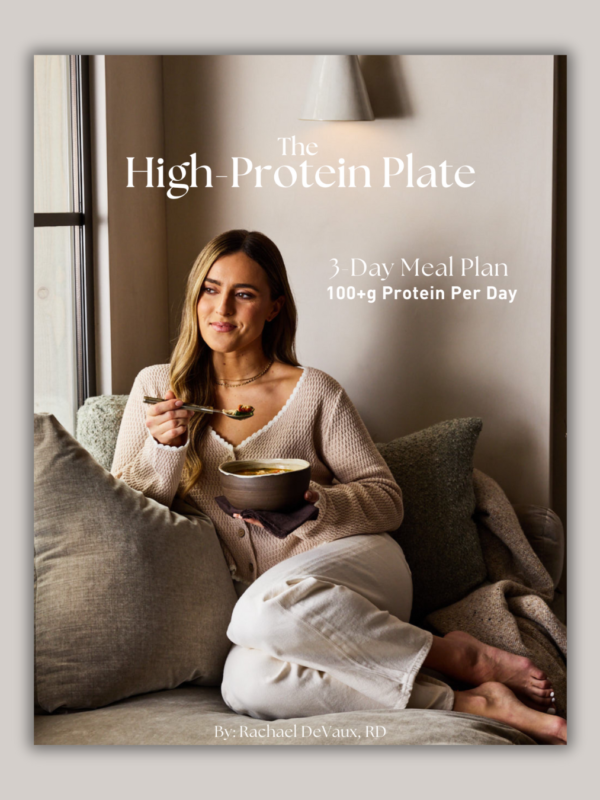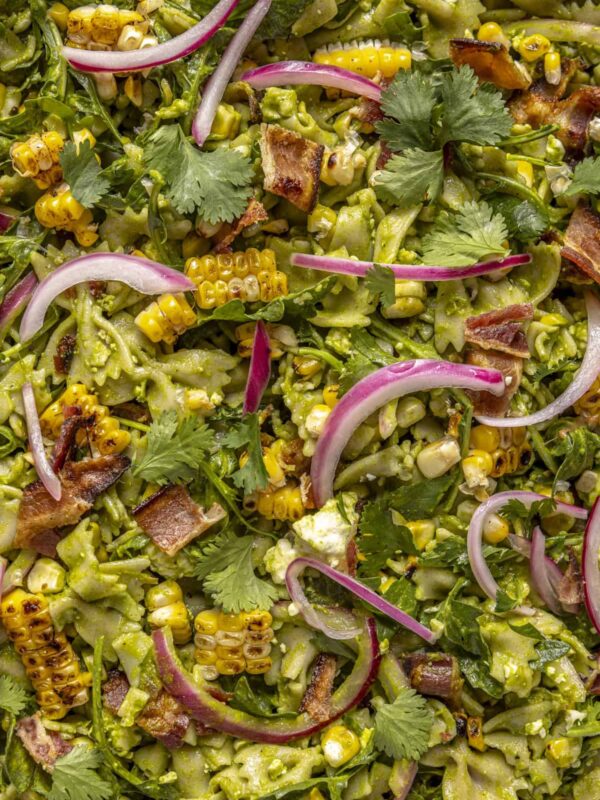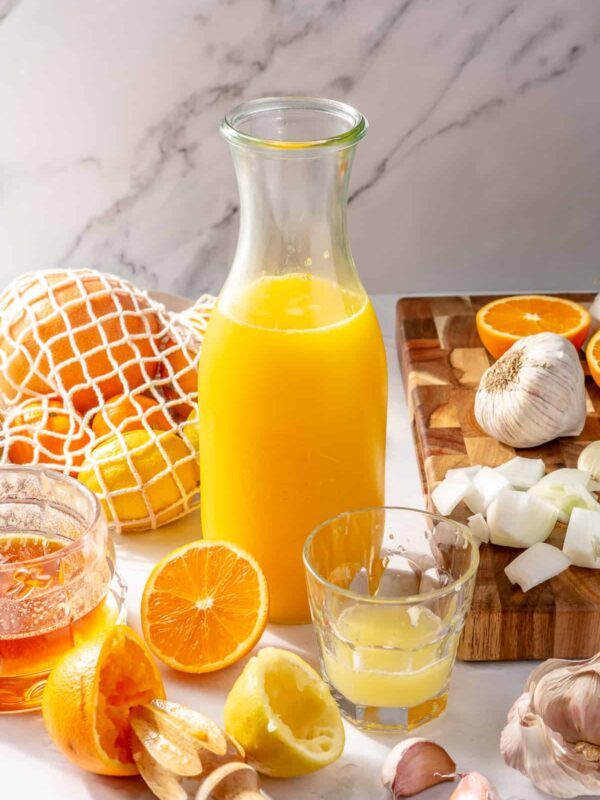
Added sugars in food has been overlooked for way too long. It’s estimated that the average American eats about 22 teaspoons of added sugar every day– this adds up to over 70 pounds of sugar a year! The majority of most sugar sneaks its way into staple pantry items, providing calories with no added nutrients and can turn into addictive habits, making it harder to avoid sugar altogether. Eating too much sugar can lead to unhealthy weight gain, high blood pressure, diabetes, and high cholesterol. In fact, it has been projected that 6.4% of the world population is currently diabetic with predictions the incidence will rise to 7.7% by the year 2030.
Breaking it down, sugars are classified as “naturally occurring” or “added.” Added sugars are defined as sugars or syrups added to foods during processing or preparation, including those sugars and syrups added at the table. Naturally occurring sugars are found in whole food items like fruit and vegetables.
The Sugar Industry Scandal
The negative side effects of sugar were tremendously downplayed during the 1960s Sugar Industry Scandal. Two Harvard nutritionists were paid to swap the blame from sugar to saturated fats as a major cause of coronary heart disease. The result: the low-fat diet craze of the 90s (still ongoing). “Fat-free” products took over the market and unfortunately, fat-free usually just means more chemicals, additives and sugar in the product. When you take the fat out of a food, the taste is altered, which is why manufacturers replace it with sweeteners, chemicals, salt, flour, and thickeners to compensate.
Sadly, big food corporations fund such research if they can foresee the results landing in their favor. Much of the consumer’s confusion in the health industry today is the result of these skewed studies, not to mention the disastrous health consequences we are left with.
Side Effects
Many people may not notice the harmful side effects sugar is responsible for, or perhaps never quite narrow it down to sugar as the root cause of their symptoms. Some negative side effects include:
- Headaches/migraines
- Acne
- Suppressed immunity
- Lack of energy
- Bloating
- Increased risk of coronary heart disease and high blood pressure
- Reduced HDL cholesterol and increased LDL cholesterol
- Weight gain
- High insulin levels/insulin resistance
How To Cut Back
-Upping protein and fat in order to stabilize our blood sugar levels and reduce cravings can definitely help with sugar cravings. Protein requires more work for the body to digest and therefore leave us feeling fuller for longer. Protein and fat are found to slow the absorption of sugar during a meal, preventing a spike in blood sugar. I recommend eating a quality protein and fat source with each meal and snack throughout the day to help curb hunger and to moderate sugar cravings.
-Increase fiber. Start eating more foods such as avocados, lentils, quinoa, brussels sprouts, peas, oats, berries, beans (more vegetables in general).
-Get in the habit of eating healthy fats!! Your body can burn sugar for energy or it can burn fat for energy. By removing sugars from your diet, you will need to replace that void with more healthy fats. In addition, just because fats contain more calories per gram as compared to carbohydrates or protein, they leave us more satisfied and provide us with so many benefits necessary for brain health and human function. Choose ingredients like avocado, olive oil, avocado oil, coconut oil, flax and chia seeds, olives, nuts, seeds, wild-caught fish.
-Choose whole-food vs. sugar-filled alternatives. For example, eat an apple over drinking apple juice. This will provide additional fiber and nutrients.
-Start your day with a meal rich in fiber, protein and fat to keep you full until lunch and less likely to reach for a sugary snack later on.
-It’s time to clean out your kitchen. Rid your pantry and refrigerators of all major sugar culprits—cookies, ketchup, bbq sauce, flavored yogurts, coffee creamers, chips, breads, cereals, spaghetti/tomato sauce, fruits canned in syrup, baked goods, and sports drinks. Try making your favorite products from scratch. Ex: Make spaghetti sauce with tomatoes, Italian seasonings, basil, tomato paste.
-Stock your kitchen and/or desk with healthy options so you can be prepared in any given situation.
-Learn how to say “no” to sugars. The more you can turn your back on sugar, the easier it becomes to avoid it and the less likely you will want it.
Replacing harmful sugar with natural sugars:
- Raw Honey
- Maple Syrup
- Dates
- Banana
- Coconut sugar
- Applesauce
- Cinnamon
Of course, this doesn’t mean that honey, maple syrup, dates, etc. are just evaporated into the body in some magical way. They are digested nearly identical. However, they do provide some antimicrobial, antibacterial and trace mineral properties. Added sugars are predominately those contributing to obesity, diabetes, and other related diseases. The main idea here is to reduce overall sugar intake and choose nature’s sweeteners when you have a sweet tooth.
When it comes to fruit (natural sugars), remember this is still sugar and not to overdo it. The same effects including bloating can occur with increased fruit intake. To help limit the amount of fruit you’re eating, choose smaller fruits so you’re not tempted to eat the whole thing if it’s massive in size or pair fruit with a protein/fat source like nut butters or raw nuts to leave you feeling fuller longer. Eating fruit around workouts are great because they are easily digested. When picking fruit, choose berries for their fiber and antioxidants content.
Recommended Intake Per Day
Women: 25g (or 6 tsp)
Men: 35g (or 9 tsp)
4g of sugar = 1 teaspoon
If you were to look at a packaged product and determine how many teaspoons of sugar it contains, you’d simply take the grams of sugar and divide that by 4. This will give you the total number of teaspoons of sugar that are in one serving. Make sure to pay close attention to the serving size! More often than not, there are several servings per package requiring you to double, triple, and even quadruple the serving size amounts to configure your total consumption.
In the end, sugar can have a different affect on almost everyone. For some, a small amount of sugar is fine every now and then and for others, acne, cravings, weight gain or migraines may follow. Try experimenting with what works for you, but first I’d recommend trying a SUGAR DETOX by eliminating added sugars from your diet to see how your body feels soon after. I’ve noticed a huge difference in my body after completing several sugar detoxes since the start of 2017. It’s incredible what the body can do when it’s cleansed of added sugar.
7-day Sugar Detox Challenge:
I prefer a 7-day sugar detox to reset your body from all the processed sugar we are presented with in the world today. Of course, going without sugar for longer than 7 days would be going above and beyond, but 7 days is long enough to begin to feel a significant difference in how your body feels when it gives up sugar. It’s up to you to determine how technical you’d like to get in terms of choosing which sugars you accept to have during the detox. Personally, I generally avoid ALL added sugars, including honey, maple syrup, stevia, dates, coconut sugar, etc. Limit your fruits to 1-2 per day and keep the fruits that are high in sugar (i.e. bananas, mango, cherries) to only one serving per day. You can eat unlimited veggies. The point is to focus both on reducing your daily consumption of packaged items and to help you realize the amount of unnecessary sugar that goes into so many of our staple food items.
The first few days may be difficult figuring out what foods you are able to have during the challenge, which is why it’s important to prepare yourself before the detox even starts! **Begin by taking one or two days to plan your meals and snacks for the week. This doesn’t mean making all these foods in advance, but simply having a go-list of items in your head. Go grocery shopping and stock up on fresh produce for the week. Lastly, clean out your fridge and pantry! You’ll be less tempted to eat sugary foods when after you’ve gotten rid of them and organized your kitchen space.
Try it out for yourself! Any questions? Feel free to comment below or email me at [email protected].
Good luck!
References:
Be a Sugar Detective | YaleHealth. (n.d.). Retrieved December 29, 2016, from http://yalehealth.yale.edu/sugardetective
Franz, M. J. (1997). Protein: metabolism and effect on blood glucose levels. The Diabetes Educator, 23(6), 643–646, 648, 650–651.
How to Kick Your Sugar Addiction. (2015, July 2). Retrieved from https://draxe.com/sugar-addiction/
Rippe, J. M., Sievenpiper, J. L., Lê, K.-A., White, J. S., Clemens, R., & Angelopoulos, T. J. (2017). What is the appropriate upper limit for added sugars consumption? Nutrition Reviews, 75(1), 18–36.
Shaw, J. E., Sicree, R. A., & Zimmet, P. Z. (2010). Global estimates of the prevalence of diabetes for 2010 and 2030. Diabetes Research and Clinical Practice, 87(1), 4–14. https://doi.org/10.1016/j.diabres.2009.10.007














ketchup comes sugar free as does tomato sauce. after becoming diabetic in m 60’s! I obviously totally gave up sugars-i was never heavily into sweets anyway so nothing lost for me. So many options now that are sugarfree. but beware of sugar alcohols and other ingredients that are masked.
Excited by the thought of #crazyrichardspb!
Thanks for the opportunity#paleopreworkout&onechocolatebanananutpaleoproteinpowder
Love this post so much! I have such an emotional relationship with sugar and turn to it whenever I am stressed, sad, happy, mad…literally any emotion. Thanks for the inspiration to cut it out of my diet 🙂
I would love to win #kouzinifoods olive oils and balsamics
🙂
Love this article and couldn’t agree more! Added sugars definitely have a negative impact on our health. I quit sugar just over 5 years ago and never looked back! I’m in the UK studying to also become a registered dietitian. Your food posts always inspire me. Thank you 🙂
That is amazing I totally agree! Aw, thank you so much 🙂
I’ve been following along with your sugar detox and totally love it. My undergraduate degree is in dietetics (I’m finishing PA school now), but I hated the fat free trend (that’s still going actually). I r
Sorry my phone freaked out! Haha but I really love the beginning of the sugar awareness phase! have you seen the documentary “fed up”? I haven’t seen it yet, but it’s definitely on my list!! Also, happy birthday girl!
hi Rachel,
I see you suggest getting rid of ketchup BBQ sauce and spaghetti sauce. What do you use for dips / sauces? ? I eat pretty clean but I put spaghetti sauce on my vegetables or add ketchup to my turkey burger. What are some alternatives for that?
Thanks!
Sara
Hi Sara! My favorite dips to use are my cilantro avocado sauce and homemade cashew pesto! It only takes a few minutes to throw into the food processor or blender to make, and it lasts almost all week. Also, I’ve really been loving Tessemae’s Creamy Ranch dressing. Perfect for dips and very good ingredients! Hope that helps 🙂